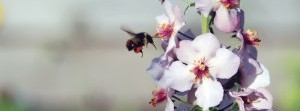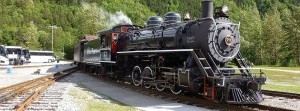
Photo Credit: Matt J Simmons
Great Glaciers: Experience these prehistoric beauties before they’re gone
The glaciers are melting.
When I took my kids down the Icefield Parkway in Jasper National Park a couple years ago, we hiked onto the ice of the park’s most iconic and beloved glacier, Athabasca. To get there, we walked past markers that poignantly point out where and when the glacier previously had its edge.
It’s a striking illustration of how much ice is disappearing and at what rate. Athabasca is far from being alone. Glaciers all over the world are being impacted by climate change and, as UNBC glaciologist Brian Menounos says, “Their future isn’t good.” Because glaciers in BC are a convenient, natural system of freshwater storage, this rapid depletion of our province’s ice means our future is directly linked to the big melt.
But what exactly that future looks like is a subject for another article. This one, instead, is intended to celebrate our ice and get you out into the landscape to check out our amazing northern BC glaciers—while you still can.
Hiking in late summer or early fall is a pleasure. The bulk of the biting bugs have run their course and the weather has a habit of cooperating. The alpine offers panoramic views and cooler air, a perfect end to any sweaty adventure on the trail. Our region has plenty of amazing glaciers that are accessible without needing a helicopter. The following are just some of many that can be found in northern BC (as well as a couple just across our borders).
Best bet for finding your way to some of the more remote glaciers included here is by picking up a copy of the Northern BC Backroad Mapbook. Remember that glaciers are dynamic and can be dangerous places; never hike onto a glacier unless you have the skills and knowledge to stay safe. And this may seem a bit obvious, but glaciers are cold. If you do intend to hike out onto the ice, remember to bring layers, even on a hot day.
The Rocky Mountains
Mount Robson hogs the sky. It’s a beast of a mountain that draws visitors from around the world. To check out the park’s glaciers—Mist, Berg, Hargreaves and Robson—hikers can follow the Berg Lake Trail. The route is well maintained and climbs from the river valley at Highway 16 up to the base of the mountain at Berg Lake, where ice regularly calves from Berg Glacier into the water. There are numerous backcountry campsites along the way, at the lake and beyond, but check to make sure you’ve got a spot before hiking the 21-km trail—this park is super busy in the summer.
Highlighting glaciers in or around our region wouldn’t be complete without including Jasper and Banff. Driving the Icefields Parkway from Jasper to Lake Louise is always rewarding. There are more than 100 glaciers on the 250 km stretch of road, including the aforementioned Athabasca. Be patient if you head down in the summer—the road bottlenecks with countless tourists and the views, if you’ve never seen them before, tend to make you drive really, really slow.
McBride
The Robson Valley around McBride has a few great glaciers accessible by foot. Kristi Glacier is about 11 km from the trailhead and features a backcountry campsite. Castle Creek (aka Roberts) Glacier can be seen by driving or hiking the Dore South Forest Service Road. The Eagle Valley trail takes you to Eagle Glacier and a cabin you can stay in by contacting the local alpine club. Check out www.visitmcbride.ca for more details.
Telkwa
The mountains in Telkwa Pass are home to numerous glaciers. The most accessible is Fubar Glacier, in the Howson Range, on the south side of the pass. Telkwa Pass connects the Village of Telkwa to Terrace via a forest service road. A popular route for bikes and off-road vehicles, the FSR is about 120 km long, with the Fubar Glacier close to the halfway point. For experienced mountaineers, the Howson Range has some impressive summits on offer, including Howson Peak itself, located on the edge of Tazdli Wyiez Bin/Burnie-Shea Provincial Park.
Smithers
Kathlyn Glacier nestles between the peaks of Dzilh Yez, also known as Hudson’s Bay Mountain. Views of the glacier can be had from Smithers and its surrounding areas, but for a close look at the ice, head up to Twin Falls Recreation Site. There, the Glacier Gulch trail climbs to the base of the glacier. It’s short, but steep, and on a hot day the icy air at the end of the trail will be welcome.
Hazelton
The Blue Lake Trail, a moderate Hazelton-area hike, takes you to Silvertip Glacier in the Rocher de Boule Range and, not surprisingly, a cerulean blue glacial lake. From the lake, if you’re feeling adventurous, you can continue hiking into the alpine.
Seven Sisters Provincial Park is south of Kitwanga, between Hazelton and Terrace. The seven jagged mountains can be seen from the highway, but to get a good look at the glaciers that tumble down from the summits, you need to hike in. The seven-kilometre Whiskey Creek Trail takes you right to the foot of one glacier, which, if you have the skills, knowledge and equipment, you can hike up onto and continue into the mountains. Be aware that you have to cross the creek on this trail; it can be dangerous if the water level is high. Late summer and early fall should be relatively safe, but be prepared to turn back if necessary. Alternatively, check out the Oliver Creek, Cedarvale and Coyote Creek trails. Information about each is available on the BC Parks website.
Terrace
If you already know about Wesach, it’s probably in the context of backcountry skiing. The mountain and its namesake glacier are a popular spot for skiers, but it’s also a great hike in the summer. North of Terrace, near Kitsumkalum Lake, logging roads get you close to the subalpine and the hike up to treeline won’t take too long, where you’ll be rewarded with some spectacular views.
Stewart and Hyder
On the road to Stewart, north of Kitwanga, Bear Glacier is a good example of retreating ice. The glacier once filled the entire pass where the highway is now. Strohn Lake formed from glacial melt in the 1940s as the ice started receding. The glacier and lake are protected as part of a provincial park, which has no facilities. There is, however, a pull-out on the highway where you can stop to check out the scenery.
The Salmon Glacier is accessed through Hyder, Alaska, just on the other side of the US border from Stewart. A rough dirt road takes you to a viewpoint overlooking the glacier, about 25 km from the town. From there, you can hike (or drive) farther up to the old Granduc Mine and check out Berendon Glacier.
Bob Quinn Lake
If you’re driving up the Stewart-Cassiar Highway (Highway 37) to the Stikine or Spatsizi, or even farther to the Yukon, it’s worth a quick stop at Bob Quinn Lake to check out the glaciers that surround Faisal Peak. Just past the Bob Quinn airstrip is a little dirt road on your left (if you’re heading north) that leads down to the lake. Faisal, and its glaciers, can be seen from the shore.
Edziza
Mount Edziza Provincial Park is otherworldly. The juxtaposition of a volcanic landscape with snow-capped mountains and big glaciers is truly awe-inspiring. Tenchen Glacier spills from the mountain down into a tortured, barren landscape of volcanic rock, ash and dust. Most visitors to the park get dropped by floatplane or helicopter, but hiking in is possible. There are a number of rough routes and trails, but make sure you check current conditions before you head in—the weather here is volatile and trails can be washed out by flooded rivers or choked with fallen trees.
Stikine
Surrounding the lower Stikine River, near where it crosses the border into Alaska, much of the landscape is a vast icefield and glacial landscape known as the Stikine Icecap. Great Glacier Provincial Park protects part of the icecap on the Canadian side. Hiking to check out these glaciers is pretty much out of the question, unless you have all the time in the world, but rafting or paddling the lower part of the river is an amazing way to experience these glaciers and an astonishingly beautiful and wild landscape.
Tatshenshini
Tatshenshini-Alsek Provincial Park is a little triangular wedge of BC, accessible only through the Yukon or Alaska. Both of the park’s namesake rivers travel through a massive glacial landscape and the park itself is part of the world’s largest protected area and a UNESCO World Heritage Site. Rafting the rivers requires a lot of planning, but hiking in to see some of the glaciers is relatively easy. Samuel Glacier, in particular, is an easy hike from the highway and an impressive sight. If you’re extremely lucky, you might complement your glacier sighting with a glimpse of the rare glacier bear, a blue-grey subspecies of black bear found only here and a small area across the border.
Atlin
Atlin’s Téix’gi Aan Tlein Provincial Park is accessible only by boat. To get to the impressive Llewellyn Glacier, hikers need to take a boat to either Llewellyn or Sloko inlets. From there, trails lead to viewpoints and a glacial lake.










